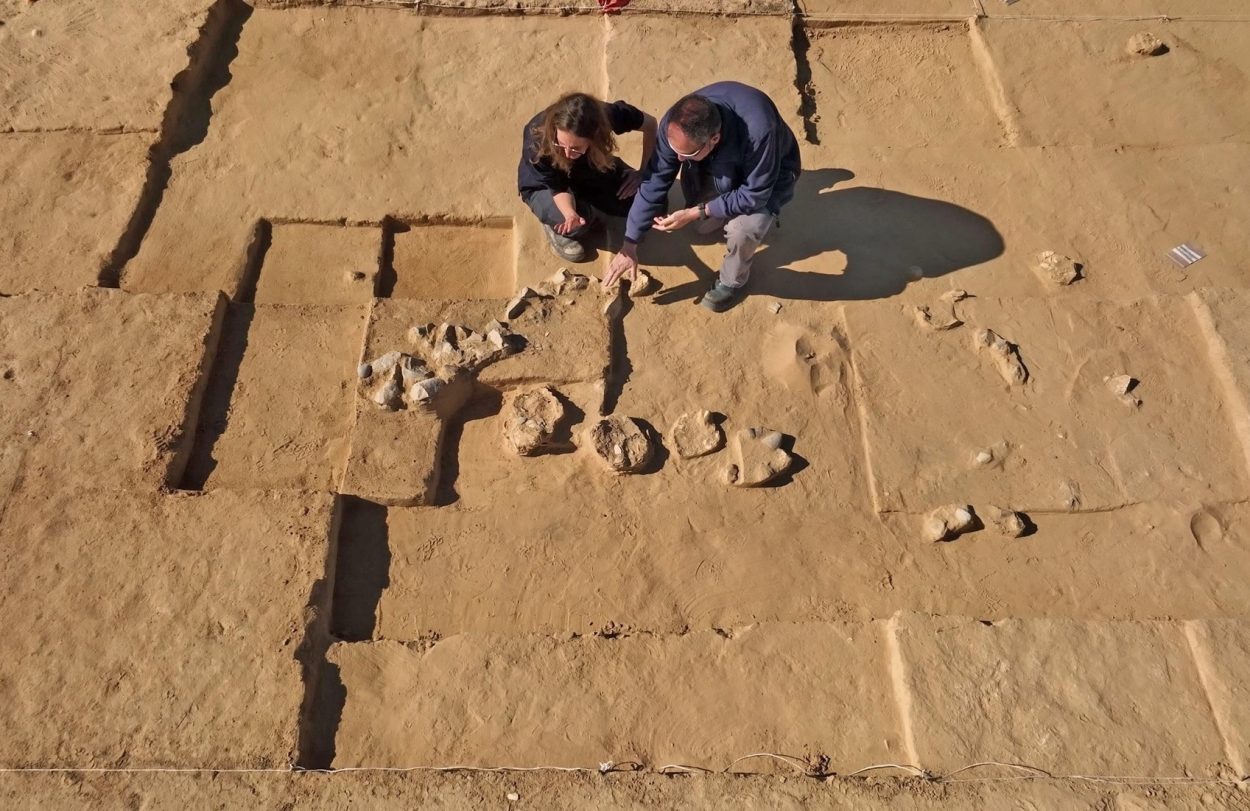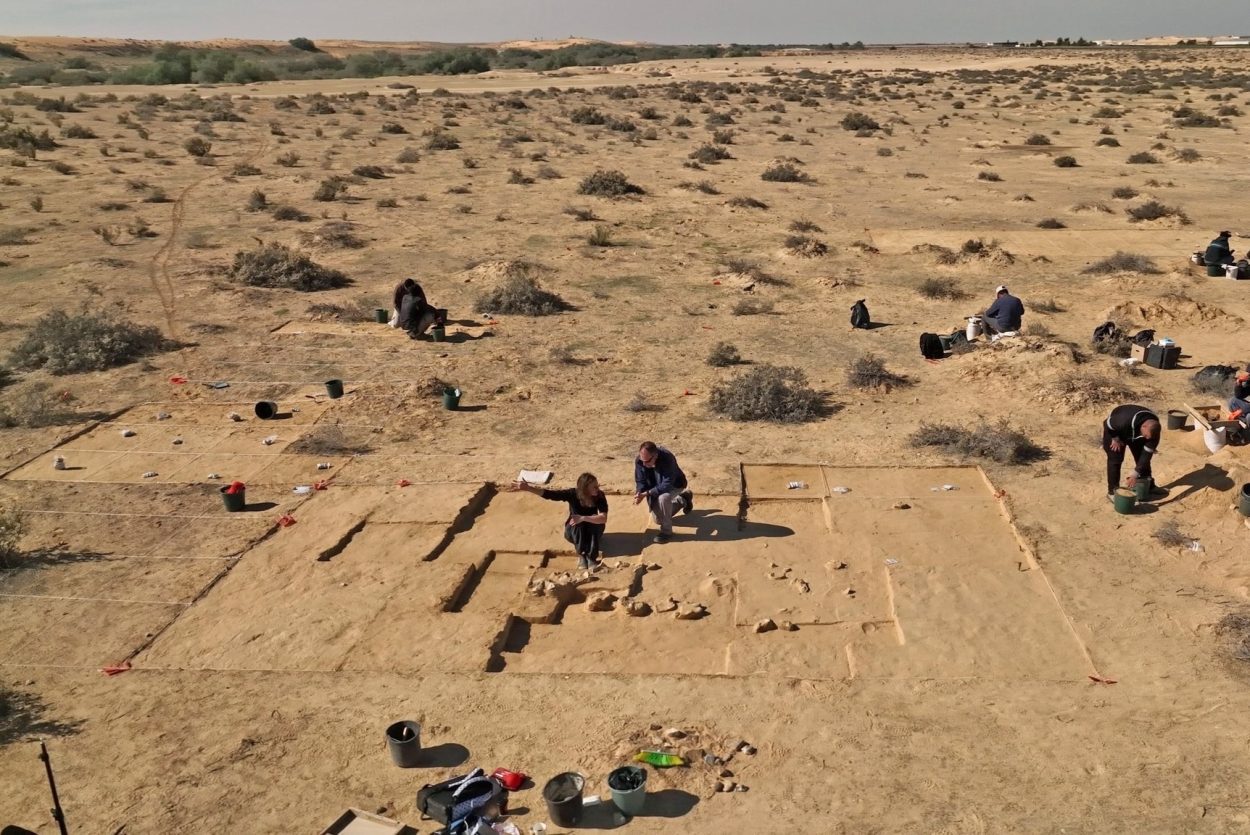Archaeologists from the Israel Antiquities Authority (IAA) have uncovered an ancient campsite where people cooked ostrich eggs between 4,000 and 7,500 years ago.
The discovery was made near Be’er Milka in southern Israel, during works for land conversion to agricultural use.
The campsite is around 20 square metres in size and was used by ancient desert nomads. Excavations revealed burnt stones, flint, stone tools, and pottery sherds, in addition to a collection of ostrich eggs.
Lauren Davis from the Israel Antiquities Authority said: “These campsites were quickly covered over by the dunes and were re-exposed by the sand movement over hundreds and thousands of years. This fact explains the exceptional preservation of the eggs, allowing us a glimpse into the lives of the nomads who roamed the desert in ancient times.”

Ostriches became extinct in the Levant region by the 19th century (excluding those in captivity or farming), however, during the prehistoric period they were very common in the wild. Some of the eggs shows evidence of decoration and incising, suggesting that they may have also had a decorative function, rather than being solely for human consumption.
“We find ostrich eggs in archaeological sites in funerary contexts, and as luxury items and water-canteens. Naturally, they were used as a source of food: one ostrich egg has the nutritional value of about 25 normal chicken eggs!” says Dr. Amir Gorzalczany from the Israel Antiquities Authority.
Eli Escuzido, Director of the Israel Antiquities Authority: “The collection of ostrich eggs from Be’er Milka is a rare and fascinating find. It seems that the eggs survived as they were covered over by the sand dunes for so long, and due to the relatively dry climate of the area. The finds will go directly from the excavation to the new analytical laboratory in the Jay and Jeanie Schottenstein National Campus for the Archaeology of Israel, where they will undergo further observation and research.”
Header Image Credit : IAA





